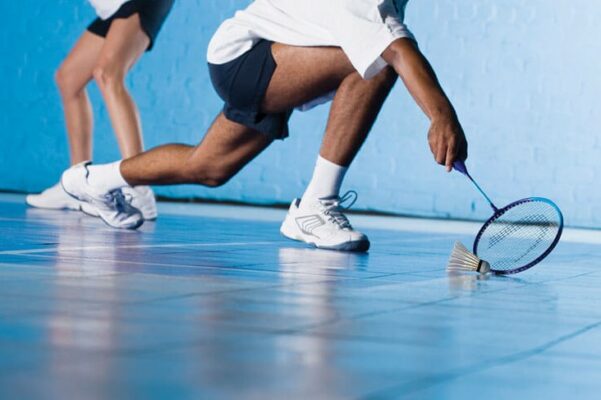Achilles tendonitis is now generally referred to as Achilles tendinopathy.
This is a common condition that occurs when the large tendon that runs down the back of your lower leg becomes irritated and inflamed.
The Achilles tendon is the largest tendon in the body. It connects your calf muscles to your heel bone(calcaneum) and is used when you walk, run, climb stairs, jump, and stand on your tip toes. Although the Achilles tendon can withstand great stresses from running and jumping, it is also prone to injury associated with overuse and degeneration.
Achilles tendon pain can occur within the tendon itself or at the point where it attaches to the heel bone, called the Achilles tendon insertion.
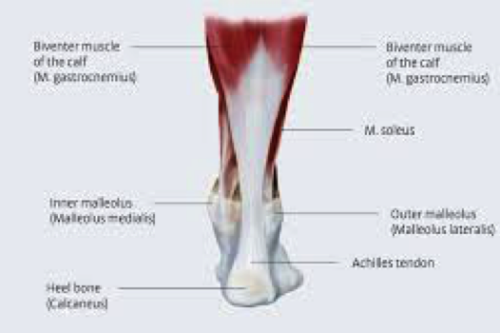
There are two types of Achilles tendinopathy, based upon which part of the tendon is affected.
Non-insertional Achilles tendinopathy
In non-insertional Achilles tendinitis, fibres in the middle portion of the tendon have begun to break down with tiny tears (degenerate), swell, and thicken.
Tendinopathy of the middle portion of the tendon more commonly affects younger, active people.
Insertional Achilles Tendinopathy
Insertional Achilles tendinopathy involves the lower portion of the heel, where the tendon attaches (inserts) to the heel bone.
In both noninsertional and insertional Achilles tendinopathy, damaged tendon fibres may also calcify (harden). Bone spurs (extra bone growth) often form with insertional Achilles tendinopathy.
Tendinopathy that affects the insertion of the tendon can occur at any time, even in patients who are not active. More often than not, however, it comes from years of overuse (long distance runners and sprinters).
Causes
Achilles tendinopathy gets worse over time if not treated. It is usually caused by overusing your Achilles tendon and very small tears can start to develop. Without treatment, these will not heal and your tendon can become weaker.
Age makes Achilles tendinopathy more likely. As you get older, your Achilles tendon becomes less flexible and less able to cope with strain on it. People over 60 are more prone to tendon damage.
Your overall health and fitness can be another cause. You are more at risk of Achilles tendinopathy if you:
- have a family history of the condition
- have a history of tendon or muscle injury
- have a health condition such as arthritis, diabetes or high blood pressure
- are obese
- have high cholesterol levels
- take an antibiotic belonging to the quinolone group
- Have a bone spur at the back of the heel
- Exercising without a proper warm up
- Over exercise and strain the calf
- Play sports that require sharp changes in direction plus stop/start
- Have poor foot posture such as flat feet which causes over pronation ( high arches can also cause problems)
- If you regularly wear high heels
- Wear the wrong and poorly fitting shoes
- Age weakens the tendon
Achilles tendinopathy is typically not related to a specific injury.
The problem results from repetitive stress to the tendon.
Symptoms
Common symptoms of Achilles tendinopathy include:
- Pain and stiffness along the Achilles tendon in the morning
- Pain along the tendon or back of the heel that worsens with activity
- Severe pain the day after exercising
- Thickening of the tendon
- Bone spur (insertional tendinitis)
- Swelling that is present all the time and gets worse throughout the day with activity
If you have experienced a sudden “pop” in the back of your calf or heel, you may have ruptured (torn) your Achilles tendon. See your doctor immediately if you think you may have torn your tendon.
Doctor’s Examination
After you describe your symptoms and discuss your concerns, the doctor will examine your foot and ankle. The doctor will look for these signs:
- Swelling along the Achilles tendon or at the back of your heel
- Thickening or enlargement of the Achilles tendon
- Bony spurs at the lower part of the tendon at the back of your heel (insertional tendinitis)
- The point of maximum tenderness
- Pain in the middle of the tendon, (non-insertional tendinitis)
- Pain at the back of your heel at the lower part of the tendon (insertional tendinitis)
- Limited range of motion in your ankle—specifically, a decreased ability to flex your foot
Tests
Your doctor may order imaging tests to make sure your symptoms are caused by Achilles tendinitis.
X-rays
X-ray tests provide clear images of bones. X-rays can show whether the lower part of the Achilles tendon has calcified, or become hardened and if there are any bony spurs. This calcification indicates insertional Achilles tendinopathy. In cases of severe noninsertional Achilles tendinopathy, there can be calcification in the middle portion of the tendon, as well.
Magnetic Resonance Imaging (MRI)
Although magnetic resonance imaging (MRI) is not necessary to diagnose Achilles tendinopathy, it is important for planning surgery. An MRI scan can show how severe the damage is in the tendon. If surgery is needed, your doctor will select the procedure based on the amount of tendon damage.
What can I do to treat this?
In most cases, nonsurgical treatment options will provide pain relief, although it may take a few months for symptoms to completely subside. Even with early treatment, the pain may last longer than 3 months. If you have had pain for several months before seeking treatment, it may take 6 months before treatment methods take effect.
Rest
The first step in reducing pain is to decrease or even stop the activities that make the pain worse. If you regularly do high-impact exercises (such as running), switching to low-impact activities will put less stress on the Achilles tendon. Change your activities to low impact exercises such as biking, cross trainer, and swimming. In the first few days of acute tendonitis try to avoid too much walking and keep the foot up to get any swelling down.
Ice
Placing ice on the most painful area of the Achilles tendon is helpful and can be done frequently throughout the day.
You can either buy a gel pack which you keep in the deep freeze and put this on the area strapping it on with a piece of bandage or such like.

Beware of ice burns and ideally put a tea towel between the ice pack and the skin.
Alternatively, you can place ice cubes in a wet tea towel roll up the towel to enclose the cubes and hit it with a rolling pin to make it crushed ice. This will mould more easily to the area to be treated.
This is especially useful in a very acute Achilles tendon problem.
Non-steroidal anti-inflammatory medication
Drugs such as ibuprofen and naproxen reduce pain and swelling. They do not, however, reduce the thickening of the degenerated tendon.
Do not take these if you are contra-indicated by either other medication you are taking or if you have any medical problem that contra-indicates you taking anti-inflammatories. Avoid taking for more than 4 weeks.
Physiotherapy
If you have tendinopathy you should be referred for physiotherapy.
The physiotherapist will fully assess you and confirm the diagnosis by palpating the tendon, listening to the history and checking that it not a referred sciatic pain.
The examination will include testing the flexibility of the ankle and calf.
The physiotherapist will also analyse your standing posture and assess whether you need orthotics. They will also look at the shoes you are currently using to see if there are any problems and suggest suitable heel raises for your footwear.
Sometimes problems occur when a tab on the shoe rubs the tendon or if a badly fitting boot causes rubbing.
A simple silicon heel pad may be prescribed which not only raises the heel slightly taking the strain off the Achilles tendon but also has the effect of absorbing shock when walking, especially on hard pavements.
The full treatment plan will then be put together for you.
Treatment may include ultrasound over the painful tendon and massage to the calf and tendon.
You will then be shown the correct exercises and stretches.
If surgery is needed, your doctor will select the procedure based on the amount of tendon damage.
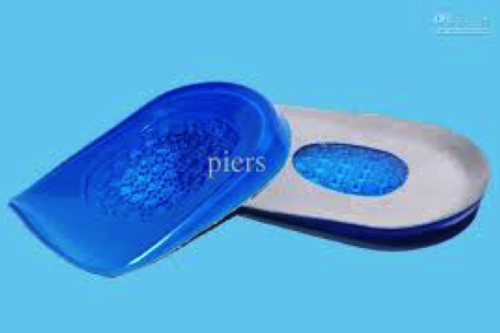
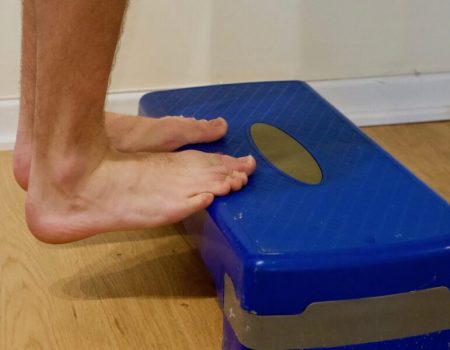
Calf and Achilles stretches
Calf stretch
Stand with one leg in front of the other and keeping the heel on the back foot flat on the floor, lean forwards placing your weight on to the front foot
Achilles/ Calf stretch
Another very useful one is to stand on the edge of a step holding on for balance Keeping your knees straight lower the heels over the edge of the step, then go up on to your tiptoes and then back down over the edge of the step dropping down slowly.
Repeat x 20 three times a day
As this becomes easy and less painful you can perform it on a single leg.
For more long term problems
Other treatment options
Standing on a slanted board-
Many specialists recommend you buy a slanted board such as this below.
Stand on it for 3 minutes 3 times a day for 3 months
If you want help you can be guided through assessment and treatment by a skype call with physios who specialise in Achilles tendons on: www.treatmyachilles.com
Cortisone injections into the Achilles tendon are no longer recommended because they can cause rupture of the tendon.
Extracorporeal shockwave therapy (ESWT)
This is a fairly new treatment and results have not yet been fully quantified
During this procedure, high-energy shockwave impulses stimulate the healing process in damaged tendon tissue. ESWT has not shown consistent results and, therefore, is not commonly performed.
ESWT is non-invasive—it does not require a surgical incision. Because of the minimal risk involved, ESWT is sometimes tried before surgery is considered.
Prevention of Achilles tendinopathy
There are a number of things you can do to help prevent Achilles tendinopathy.
If you have underlying problems that put you more at risk, it’s important to get these sorted.
Losing weight if you are obese may reduce the strain on your Achilles tendon as well as being good for you generally.
A podiatrist is someone who specialises in conditions that affect the feet. Podiatrists can analyse the way you walk and advise on things to avoid. For example, high-impact sports that involve jumping and landing, like basketball, are risky if you have flat feet.
What can be done if none of the above work??
Surgery should be considered to relieve Achilles tendinopathy only if the pain does not improve after a minimum of 6 months of nonsurgical treatment. The specific type of surgery depends on the location of the tendinopathy and the amount of damage to the tendon.
Gastrocnemius recession
This is a surgical lengthening of the calf (gastrocnemius) muscles. Because tight calf muscles place increased stress on the Achilles tendon, this procedure is useful for patients who still have difficulty flexing their feet, despite consistent stretching.
In gastrocnemius recession, one of the two muscles that make up the calf is lengthened to increase the motion of the ankle. The procedure can be performed with a traditional, open incision or with a smaller incision and an endoscope—an instrument that contains a small camera. Your doctor will discuss the procedure that best meets your needs.
Complication rates for gastrocnemius recession are low, but can include nerve damage.
Gastrocnemius recession can be performed with or without debridement, which is removal of damaged tissue.
Debridement and repair (if the tendon has less than 50% damage).
The goal of this operation is to remove the damaged part of the Achilles tendon. Once the unhealthy portion of the tendon has been removed, the remaining tendon is repaired with sutures, or stitches to complete the repair.
In insertional tendinopathy, the bone spur is also removed. Repair of the tendon in these instances may require the use of metal or plastic anchors to help hold the Achilles tendon to the heel bone, where it attaches.
After debridement and repair, most patients are allowed to walk in a removable boot or cast within 2 weeks, although this period depends upon the amount of damage to the tendon.
Debridement with tendon transfer (tendon has greater than 50% damage).
In cases where more than 50% of the Achilles tendon is not healthy and requires removal, the remaining portion of the tendon is not strong enough to function alone. To prevent the remaining tendon from rupturing with activity, an Achilles tendon transfer is performed. The tendon that helps the big toe point down is moved to the heel bone to add strength to the damaged tendon. Although this sounds severe, the big toe will still be able to move, and most patients will not notice a change in the way they walk or run.
Depending on the extent of damage to the tendon, some patients may not be able to return to competitive sports or running.
Recovery
Most patients have good results from surgery. The main factor in surgical recovery is the amount of damage to the tendon. The greater the amount of tendon involved, the longer the recovery period, and the less likely a patient will be able to return to sports activity.
Physiotherapy is an important part of recovery. Many patients require 12 months of rehabilitation before they are pain-free.
Complications
Moderate to severe pain after surgery is noted in 20% to 30% of patients and is the most common complication. In addition, a wound infection can occur and the infection is very difficult to treat in this location.
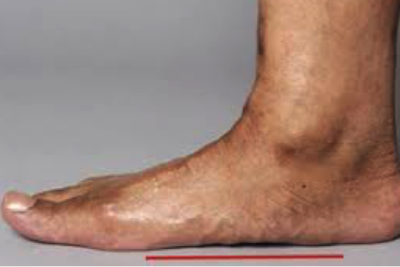

Orthotics to help relieve Achilles tendon problems
Orthotic devices or orthoses can help both treat and prevent Achilles tendinopathy. These include special insoles. These particularly effective if the shape of your foot arch increases the stress on your Achilles tendon or one leg is longer than the other. You can buy these off-the-shelf or they can be custom-made for you. Ask your physiotherapist or podiatrist for advice.
Heel lifts raise your feet by a small amount to take some strain off the tendon. Buy shoes with removable insoles so there’s enough room for orthotic devices to fit comfortably. If you already have orthotics or use insoles remember to take them with you when buying new shoes.
It may be tempting to wear slippers at home because they are comfortable but many slippers do not give you enough support. Choose ones with a cushioned sole and a fastening to hold them securely, or wear ordinary shoes.
You should wear well-fitting shoes that are appropriate for the activity you are doing. Remember all shoes have a life so check to see if they are worn out or worn unevenly on the heel
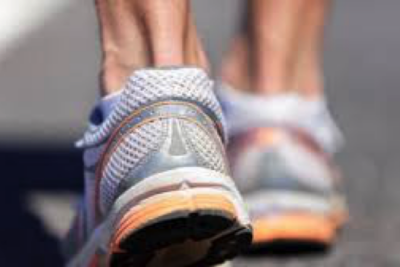
Further Tips
Whether you’re working or exercising, make sure you use the right equipment and techniques. For example, cyclists can get Achilles tendinopathy by setting their saddle too low. You should limit repetitive motions that overuse the tendon.
Whatever exercise you do, build up slowly. Gradually increase the intensity and the length of time you spend being active. It is a good practice to warm up your muscles before you exercise and cool them down after you have finished.
Move your feet up and down a few times, then go up and down onto tiptoes 10-20 times followed by some calf stretches and Achilles stretch.
Recovery can take weeks or months. It depends how quickly you get it treated, and what treatment you need.
The sooner you are diagnosed and start your treatment, the more effective it will be. Generally, symptoms should improve three to six months after you start treatment. In most cases the pain and movement will improve after 12 weeks of treatment.
It is important to rest your damaged tendon properly. Too much activity while you’re having treatment may delay your recovery. And you’ll need a period of rehabilitation after any non-surgical intervention.
Your physiotherapist will want to keep an eye on how you are progressing. You may need a few physiotherapy sessions over about six weeks.
It can take time to build up the eccentric exercises your physiotherapist gives you to do. You should expect to do them daily for at least three months for the best result, probably longer.
It can also take time to evaluate and correct poor technique that contributed to your Achilles tendinopathy. You may need to switch to a different playing or running surface.
It’s important that you return to physical activity gradually and make sure you have rest days. If you need an operation to repair your tendon, you may not be able to return to the level of activity you were doing before. The tendon may not be as strong or as flexible as it was previously.
What shoes will help avoid Achilles problems?
Choosing the most suitable footwear for what you’re doing – and where you’re doing it – can help prevent Achilles tendinopathy. It can also stop it coming back.
Running or playing sports can put a lot of strain on your feet and your Achilles tendon. This is why it’s important to wear the right shoes.
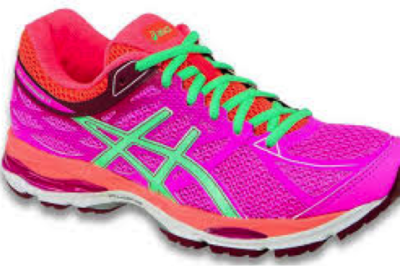
Sports shoes are all different. For instance, running shoes need cushioning in the midsole and a flared heel for stability. But they will not give you the right support for playing racquet sports. Squash or tennis shoes should give you better stability when moving and stopping suddenly round the court. Go to a specialist sports shop for advice and a proper fitting.
Trainers and other footwear don’t last forever. Change them if they stop giving you enough support or cushioning.
Make sure shoes fit properly. There should be 1cm of space from the top of your longest toe to the end of the shoe so you can wiggle your toes. But they shouldn’t slip. Try both shoes on and walk round to make sure they don’t pinch or rub.
A good tip is to buy shoes when your feet are exercised and hot so make buying shoes the last thing on your shopping list.
Wearing high heels can put strain on your Achilles tendon so try not to wear high heels all the time. It helps to stretch your calf muscles regularly.

